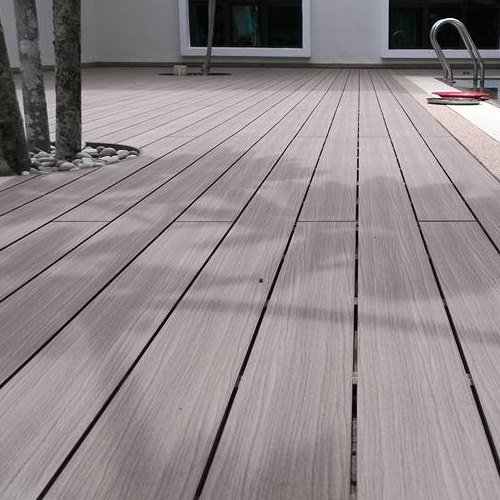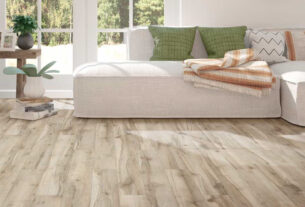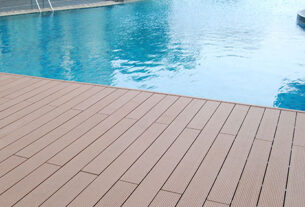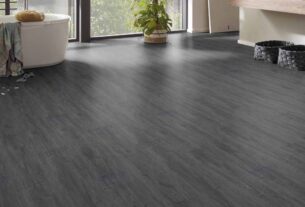When it comes to revamping your home or office space, the flooring you choose plays a pivotal role in both style and functionality. Two popular options on the market today are WPC (Wood Plastic Composite) flooring and traditional wood flooring Dubai. In this blog, we’ll dive into a detailed comparison of these two flooring options—exploring their benefits, drawbacks, and everything you need to know before making a decision.
Understanding WPC Flooring
WPC flooring, short for Wood Plastic Composite, is an innovative alternative designed to mimic the appearance of natural wood while offering added benefits. Made from a blend of wood fibers, plastic, and various composite materials, WPC flooring is engineered to withstand moisture, heavy traffic, and everyday wear and tear. This type of flooring is gaining popularity for several reasons:
- Water Resistance: Unlike traditional wood, WPC is highly resistant to water, making it an excellent choice for kitchens, bathrooms, and basements.
- Low Maintenance: WPC flooring typically requires less upkeep than natural wood. A simple wipe down and occasional deep cleaning are usually sufficient to keep it looking fresh.
- Ease of Installation: Many WPC products come with click-lock systems, making them a favorite for DIY enthusiasts.
- Consistency in Appearance: With advanced manufacturing techniques, WPC flooring offers a uniform look, reducing the natural variations seen in traditional wood.
Embracing Traditional Wood Flooring
Traditional wood flooring, on the other hand, offers an unmistakable charm and authenticity that many homeowners love. Often considered a timeless investment, hardwood floors can enhance the natural warmth and elegance of any room. However, traditional wood comes with its own set of considerations:
- Authentic Aesthetic: There’s an unmatched beauty in the natural grains and unique character of wood. Each plank tells its own story, adding a sense of history and luxury.
- Refinishing Possibilities: Over time, traditional wood floors can be sanded and refinished to restore their original luster, making them a long-term investment.
- Durability Issues: While hardwood can be durable, it is also susceptible to water damage, scratches, and dents if not properly maintained.
- Higher Maintenance: Traditional wood flooring often demands more care, including regular cleaning, polishing, and, occasionally, refinishing to keep it in top condition.
Cost Considerations
Upfront Investment
- WPC Flooring: Generally, WPC flooring tends to be more affordable upfront. The manufacturing process and lower material costs allow homeowners to achieve a high-end look without breaking the bank.
- Traditional Wood Flooring: Natural wood flooring typically comes with a higher initial price tag. The cost of premium wood species, coupled with more complex installation processes, contributes to a steeper investment.
Long-Term Value
- WPC Flooring: While budget-friendly, WPC flooring is designed to offer long-term performance, especially in areas prone to moisture. Its durability and low maintenance make it a cost-effective choice in the long run.
- Traditional Wood Flooring: Although more expensive, hardwood floors can potentially add value to your home. Their classic appeal is highly sought after in the real estate market, offering a higher resale value when maintained properly.
Durability and Maintenance
Durability
- WPC Flooring: Engineered to withstand harsh conditions, WPC is highly resistant to moisture, scratches, and dents. It’s an ideal solution for busy households or commercial spaces where heavy foot traffic is expected.
- Traditional Wood Flooring: Hardwood floors are durable with proper care, but they are more vulnerable to moisture, which can lead to warping and damage. Additionally, high-traffic areas might require more frequent maintenance to prevent scratches and dents.
Maintenance
- WPC Flooring: Maintenance is simple—regular sweeping and occasional mopping will keep your floors looking pristine. The water-resistant nature of WPC means spills can be wiped up without worry.
- Traditional Wood Flooring: Requires more diligent care. Spills should be addressed immediately, and periodic refinishing might be necessary to combat wear and tear. The natural material also demands specialized cleaning products to avoid damaging the finish.
Aesthetic Appeal and Versatility
Design and Style
- WPC Flooring: Modern WPC flooring offers a wide array of designs, colors, and textures that closely resemble natural wood. Manufacturers are continuously innovating, providing options that cater to various interior styles—from contemporary to rustic.
- Traditional Wood Flooring: With its natural variations in grain and color, traditional wood flooring offers a unique and organic aesthetic that many find irresistible. Each piece is one-of-a-kind, adding character and charm to any space.
Installation Versatility
- WPC Flooring: Its interlocking systems make it a go-to for DIY installations, allowing for quick and hassle-free setup. Its resilience also means it can be installed in a variety of environments, including areas where moisture is an issue.
- Traditional Wood Flooring: While the installation of hardwood floors can be more time-consuming and may require professional assistance, the end result is a beautifully crafted floor that exudes luxury and sophistication.
Sustainability and Environmental Impact
Eco-Friendliness
- WPC Flooring: Often made with recycled materials, WPC flooring presents an eco-friendly option that minimizes waste. Its production process can be more sustainable, depending on the manufacturer.
- Traditional Wood Flooring: Sourced from renewable resources, hardwood floors can be sustainable if harvested responsibly. However, environmental concerns arise if deforestation practices are not managed carefully. Certification from reputable sources can help ensure eco-friendly practices.
Making the Right Choice
Choosing between WPC and traditional wood flooring ultimately depends on your specific needs, lifestyle, and budget. If you’re looking for a durable, low-maintenance option that can handle moisture and heavy traffic, WPC flooring may be the way to go. On the other hand, if you value the timeless beauty, character, and potential resale value of natural wood, then traditional hardwood might be worth the extra investment.
Key Considerations:
- Budget: WPC flooring is generally more cost-effective upfront, while traditional wood may offer higher long-term value.
- Maintenance: For a busy household with pets and children, WPC flooring’s low-maintenance nature is a major plus.
- Aesthetics: If a unique, organic appearance is your top priority, traditional wood flooring could be the better choice.
- Environment: Consider the source and sustainability practices behind each option.
Conclusion
Both WPC and traditional WPC flooring Dubai have distinct advantages and challenges. The ultimate decision will hinge on factors like cost, durability, maintenance, aesthetic preferences, and environmental impact. By carefully weighing these elements, you can select the flooring that not only enhances your living space but also aligns with your lifestyle and values.
In the ever-evolving world of home design, staying informed about the latest trends and innovations ensures you make the best choice for your environment. Whether you lean towards the modern resilience of WPC or the classic charm of natural wood, a well-chosen floor can transform your space into a beautiful and functional haven.





